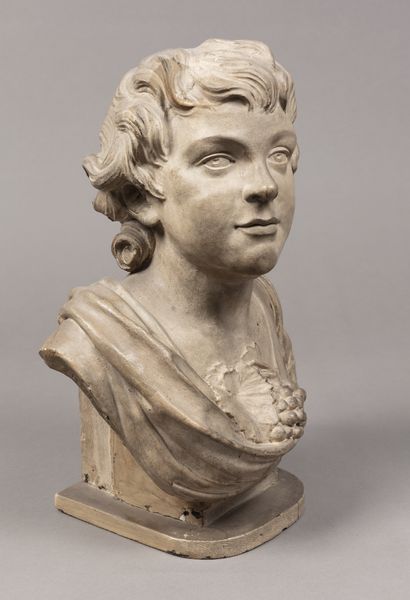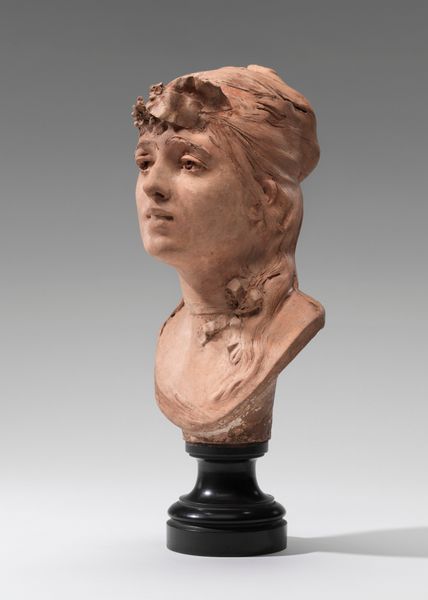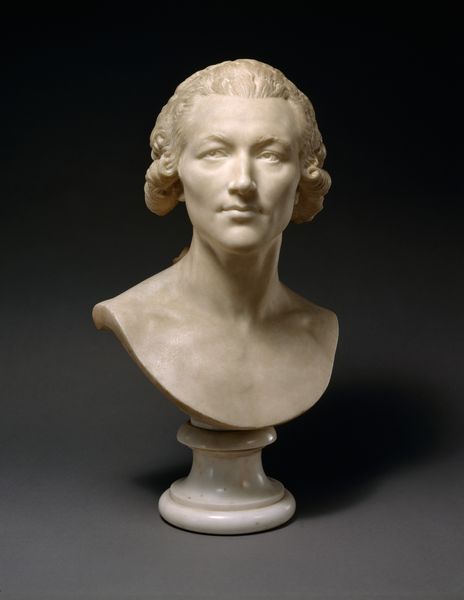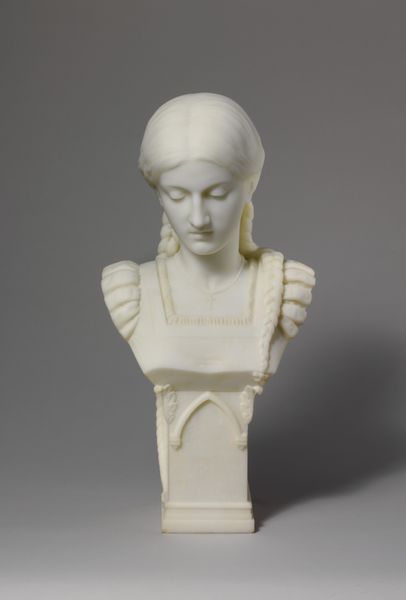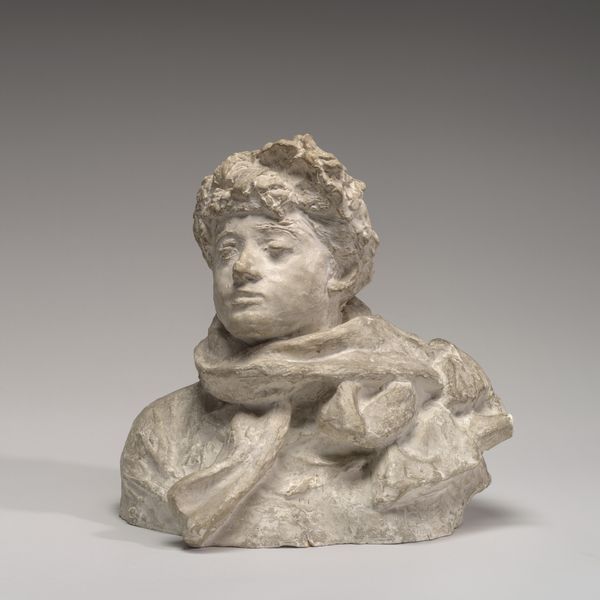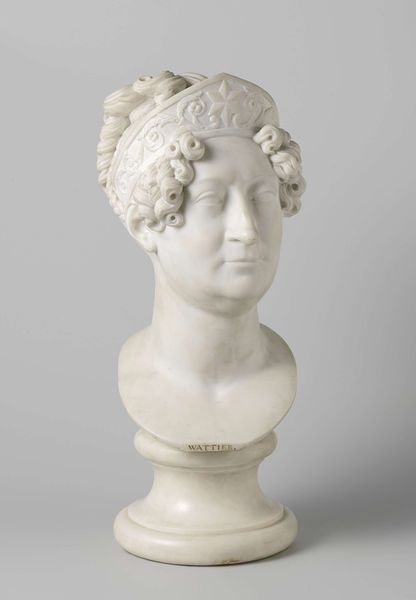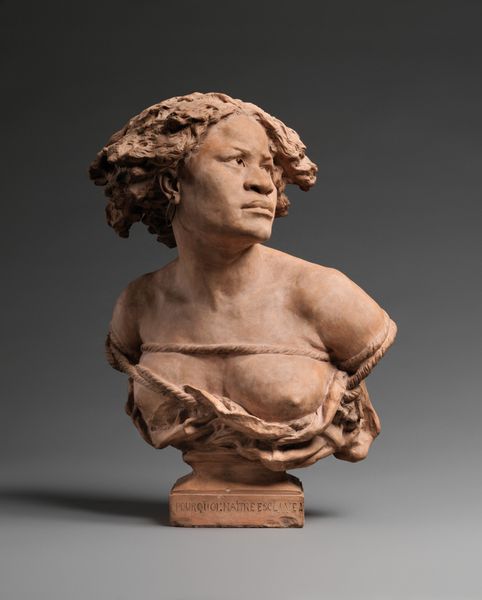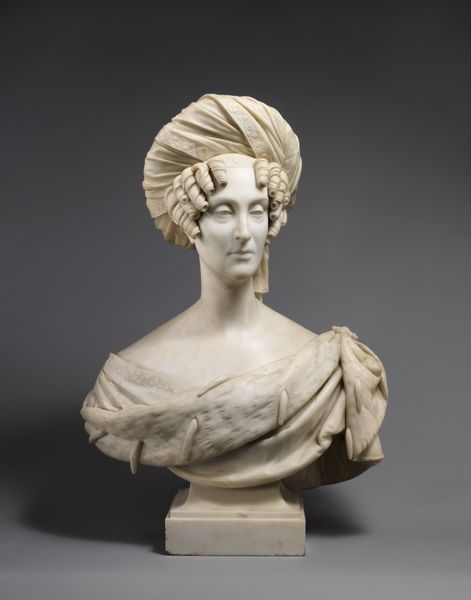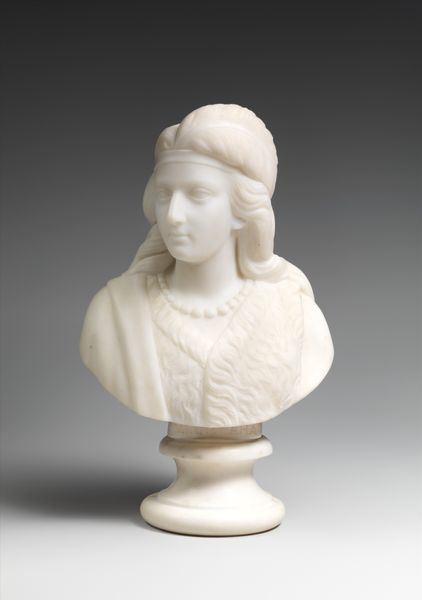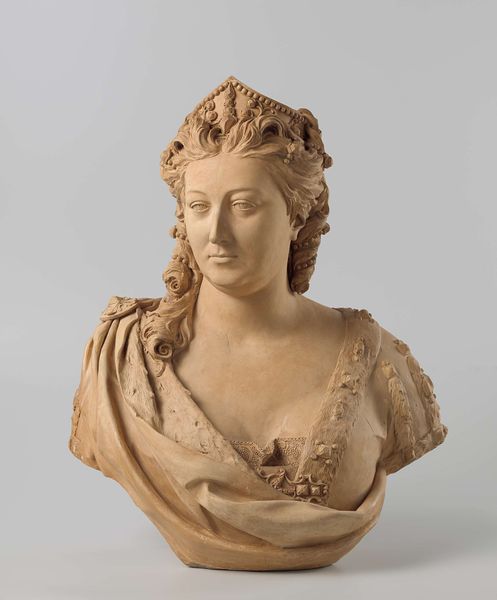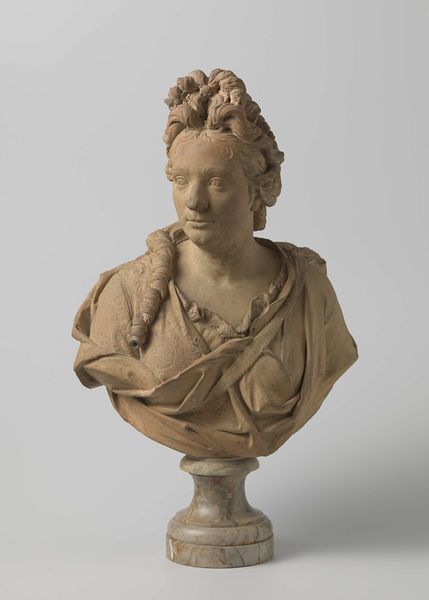
Dimensions: Confirmed: 26 × 13 15/16 × 10 5/8 in., 51.9 lb. (66 × 35.4 × 27 cm, 23541.686g)
Copyright: Public Domain
Curator: Standing before us is a marble sculpture, a portrait bust of Gioachino Rossini created in 1865 by Albert-Ernest Carrier-Belleuse. Editor: Immediately, I’m struck by the almost pensive mood. Despite being a celebrated composer known for his operas buffa, the sculpture conveys a certain gravitas. Curator: Absolutely. The marble lends itself to that sense of enduring importance. Rossini, immortalized this way, speaks volumes about how society chooses to remember its cultural icons. Note the laurel leaves which indicate his symbolic importance and talent. Editor: Those leaves are a powerful symbol, harking back to classical ideals of artistic achievement, right? And the choice to render him in the Neoclassical style definitely frames Rossini within a lineage of "great" artists, dominated at that time mostly by men, reinforcing their power and legacy through visual representation. Curator: Precisely. It echoes a desire to connect with the perceived glory of ancient Greece and Rome, establishing a direct symbolic link. The laurel wreaths are a motif seen across empires, and they lend the image an unmistakable, culturally resonant feeling. It reflects not only Rossini’s achievement but also France’s cultural aspirations under Napoleon III. Editor: But also think about who gets to be monumentalized. How many women composers or artists were granted this kind of permanent, marble tribute? It reflects the limited scope of artistic recognition available and how we often equate “genius” with a particular gender and social class. It feels like we're constantly building new monuments for a select few while history holds multitudes, including many lesser-known artists marginalized in their own time. Curator: I acknowledge that it's a very good point to bring up. These visual relics serve as potent cultural reminders of societal priorities. The decision to present Rossini in marble, adhering to neoclassical forms, really solidified his image for generations to come, tying him directly into established narratives of artistic genius and immortalizing that very vision. Editor: Right. This piece shows us how public memory is constructed, not necessarily a comprehensive look back, but more like a selective, deliberate crafting of a narrative. It makes you think about all the unheard voices that were there too and about art's power to subtly shape perspectives across decades and centuries. Curator: Indeed. It's a fascinating glimpse into how artistry and cultural values intersect in permanent and telling ways.
Comments
No comments
Be the first to comment and join the conversation on the ultimate creative platform.
